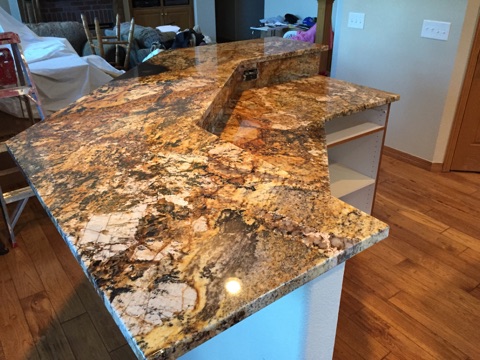Where Does Granite Come From?
Natural stone offers homeowners an amazing opportunity to add beauty and value to their properties. Two primary choices include granite and marble. Both are different, and yet, they both bring beauty and value.
Granite — It’s Amazing History
It is one thing to head into the kitchen and make dinner surrounded by granite countertops, floor tiles, and the beautiful textures and crystals that granite offers. It is quite another thing to understand how granite came to be. Rocks are old, so their age is not that impressive. When it comes to granite, however, how it was created becomes something even your kids will appreciate. Granite is solidified magma. Yep, the same magma from inside an active volcano. The difference between magma and lava is that lava comes from a volcanic eruption while magma never erupts.
That little fact is what makes granite so beautiful. Crystals need heat and time to grow so a volcano that does not erupt offers both. In addition to the crystals are the minerals that help to give different types of granite their color and character.

The Making of Lava and Magma
Both lava and magma are igneous, which means it is volcanic. Their color tells us a lot about what kind of minerals are involved and even what the origin of the granite is. Two terms come up, mafic and felsic. For the sake of this blog, mafic means dark and felsic means light. There are intermediate grades of granite which are between both mafic and felsic. There is also ultramafic which is really dark. Dark colored granite usually has a lot of iron or magnesium in it. You may also see streaks of reds and browns. The granite that is lighter in color has more feldspar in it.
The top importers of granite into the US are Italy, India, China, Norway, and Brazil.
Italian granite is usually light (felsic) and ranges from medium gray to white, all with speckles of black or dark gray.
Norway produces white granite one with medium striations and one with fewer inclusions.
China also produces gray granite, but it offers yellow/golden, green, pink, and dark gray colors of granites.
Brazil offers a beautiful selection of granite that ranges from white to rich brown. Much of the Brazilian granite is a range of yellow and pinks, but there is also green, gray, red, and black colors that are stunning.
Indian granite also comes in a wide array of colors such as reds, oranges, pinks, browns, beige/yellows, green, black, and white. The range here is mostly in the pinks and browns, but the red is most beautiful.
No matter they type or color of granite you are looking, the experts at Denver’s Creations in Tile and Marble can help you find the perfect granite slab for your home.
